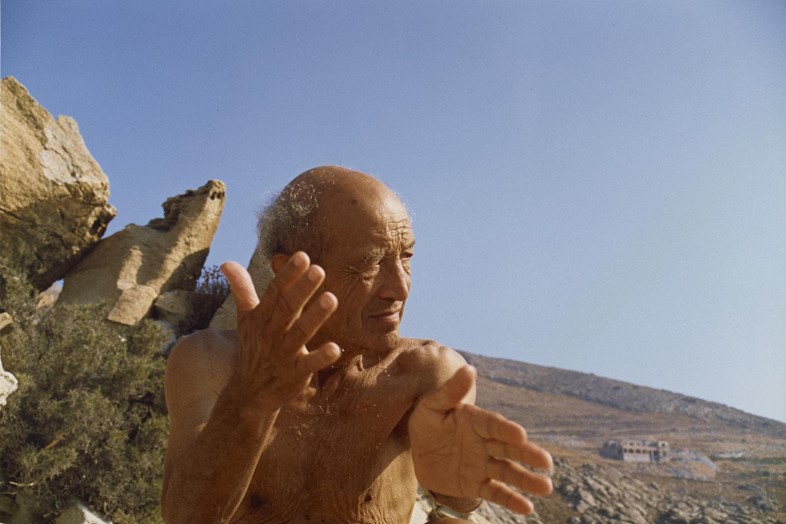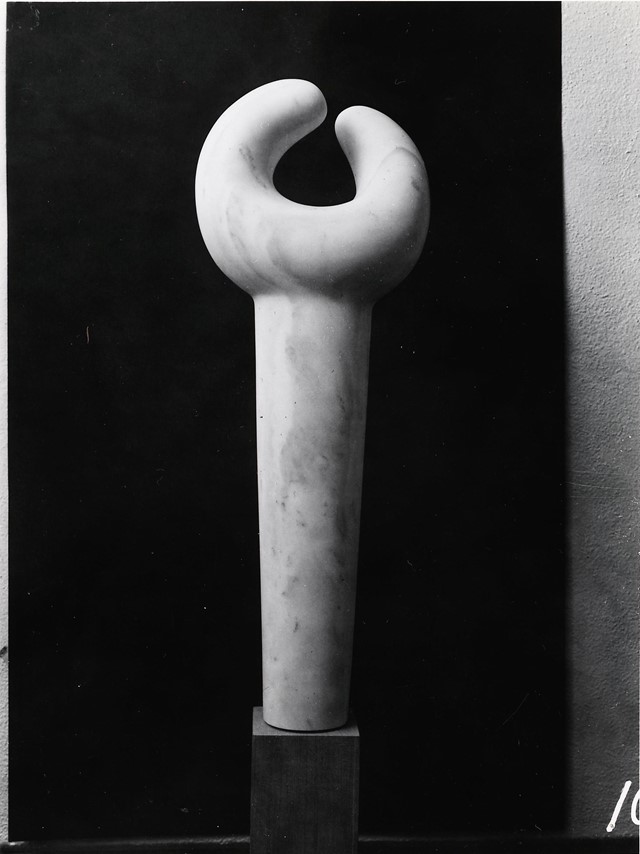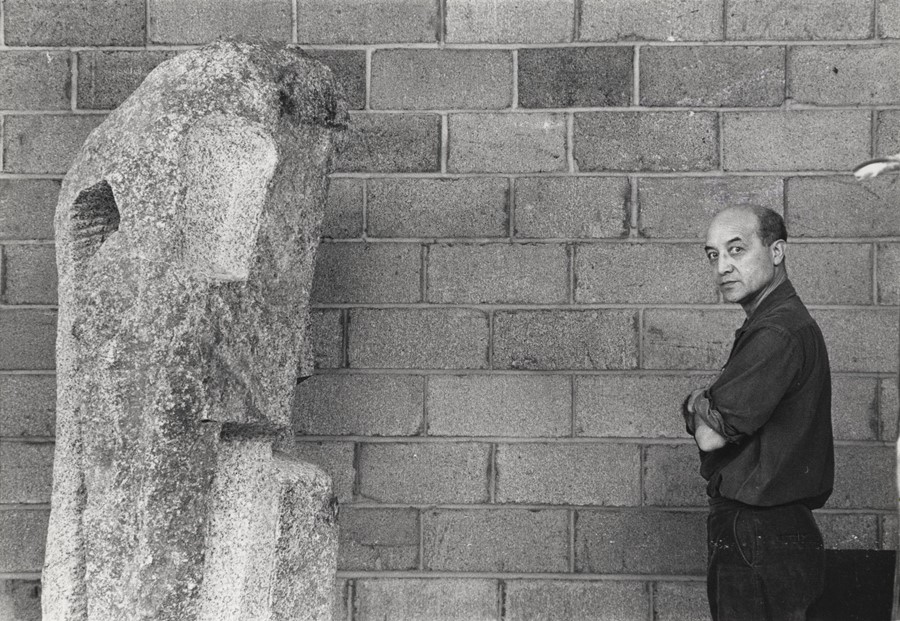A new publication explores the multifaceted artist’s relationship with Greece, and how his engagement with a diverse range of cultures and practices shaped his legacy
Isamu Noguchi was a sculptor. He was a landscape gardener. He designed furniture and lighting and playgrounds and ceramics. He was an architect and a set designer and an explorer of the world.
Born in Los Angeles in 1904 to a Japanese poet father and an American writer mother, Noguchi made it his life’s mission to experience whatever this planet might have to offer, in as many directions as he could reach. In doing so, he developed a body of work that is almost instantly recognisable, but straddles such a varied range of fields that you could stumble across it at almost any time.
Newly published in two volumes by Atelier Éditions, Noguchi and Greece, Greece and Noguchi enlists writers and creatives to excavate the pivotal 20th century artist’s relationship with the country he visited again and again. Editor Ananda Pellerin is quick to state that while she sees Noguchi as an internationalist, it was important for her to separate his many expeditions from the negative connotations of wealth and appropriation we are familiar with today. She explains, “The idea of internationalism is now associated with wealth. The whole time we were working on the book I was trying to figure out how to describe him without the suggestion he was just spreading himself everywhere, wherever he wanted to go, because he wasn’t like that. He was very much a person who showed up, watched and listened. He would be happy to explore and experience what was there rather than imposing himself on a place.”
Pairing new texts from Diane Apostolos-Cappadona, Hsiao-Yun Chu, Dakin Hart, Nicolas Paissios, Jannis Varelas and Objects of Common Interest founders Eleni Petaloti and Leonidas Trampoukis with original and never-before-seen letters, sketches and photographs from Noguchi himself, the book is an extension of a research and exhibition project initiated by Objects of Common Interest and the Noguchi Museum in New York. It follows a number of projects centred on the pioneering artist’s life and career around the world, including a landmark retrospective that first appeared at London’s Barbican in 2021 and is now touring Europe.

Unlike previous retrospectives and publications, Noguchi and Greece, Greece and Noguchi considers the specific influence of Greek culture on his work. It offers readers a granular exploration of his ever-evolving creative and philosophical identity, and how his engagement with a diverse range of cultures and practices shaped his legacy. The book also spotlights Noguchi’s relationships with his peers, such as futurist Buckminster Fuller and choreographer Martha Graham.
Dissecting the plethora of different journeys people take through art and design history on their way to discovering Noguchi, Pellerin says, “He was so multifaceted and worked across genres and with different materials. He collaborated and he travelled all over the place. He really didn’t put any parameters around himself and did just allow himself to be conduit or responsive to what was going on. I think because of that, you can actually encounter him in all sorts of different ways, and then be surprised that there’s this other part to him, like when I found out that he had done props and costumes. It’s not about the genre or the medium or the material. It’s actually about the sensibility that he brings to all things right. A lot of designers or artists would say, no, I don’t do costumes, but he was like, hey, it’s Martha Graham, let’s do it. I like that kind of attitude.”

Throughout the book, documentation from his career demonstrates the ways white marble, island light and the sinuous forms of Greece’s landscapes filtered through Noguchi’s mind and into his works. He was, evidently, enchanted. In the words of his friend Henry Miller, “Light acquires a transcendental quality. It is not the light of the Mediterranean alone, it is something more, something unfathomable, something holy. Here the light penetrates directly to the soul, opens the doors and the windows of the heart, makes one naked, exposed, isolated in a metaphysical bliss which makes everything clear without being known.”
Noguchi and Greece, Greece and Noguchi is published by Atelier Éditions and is out now.






